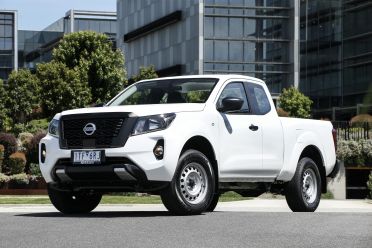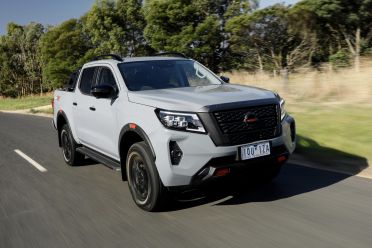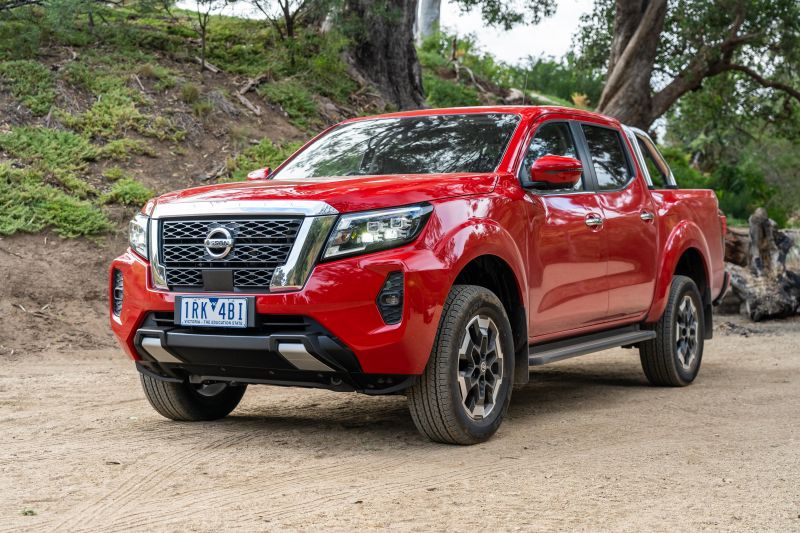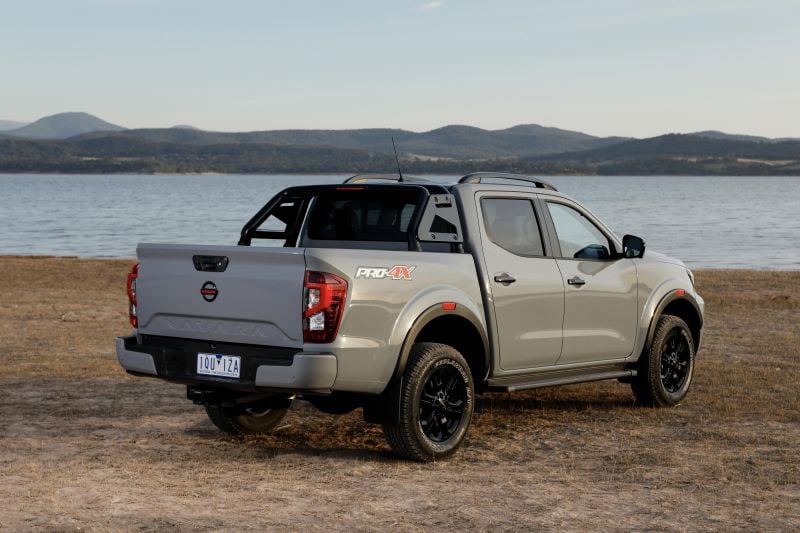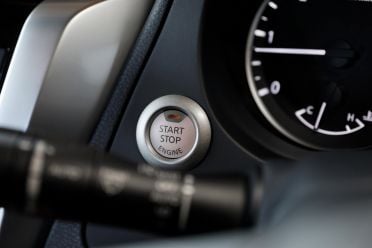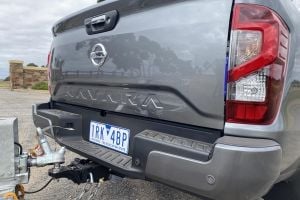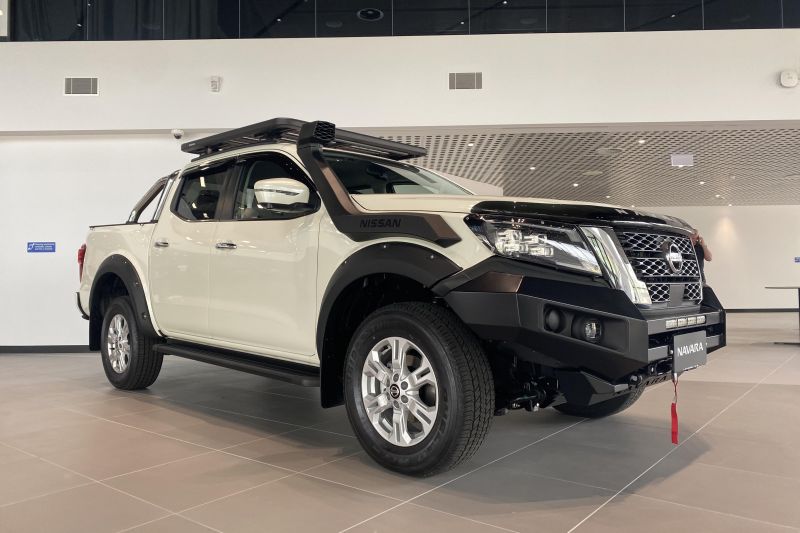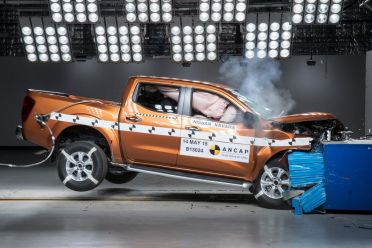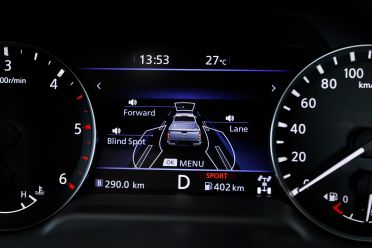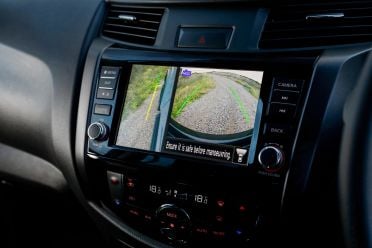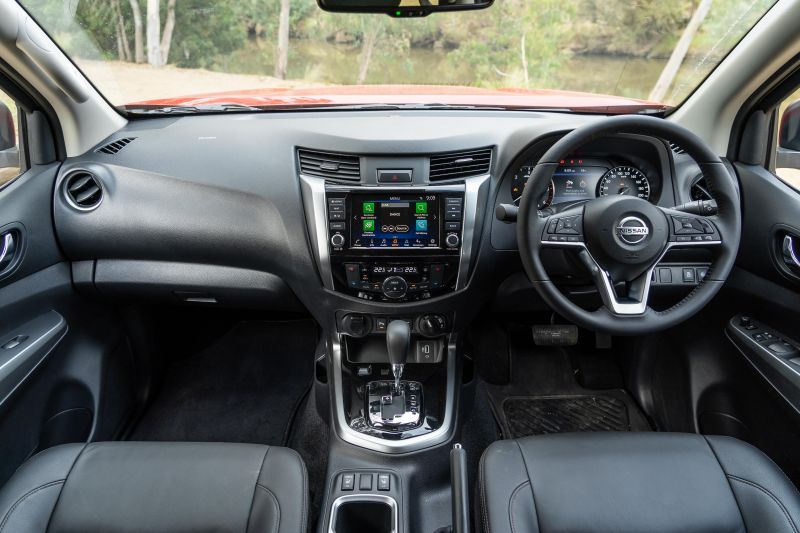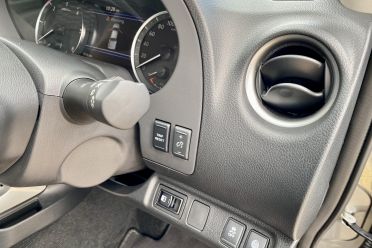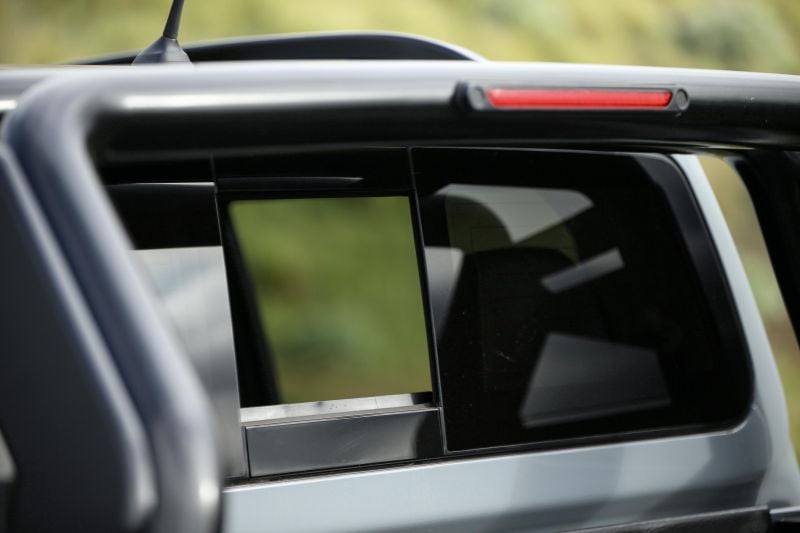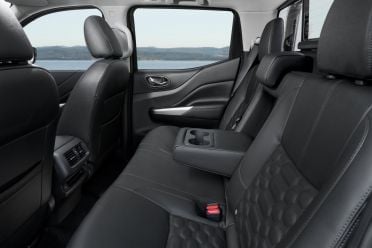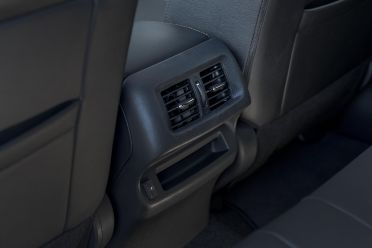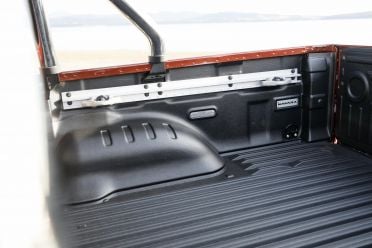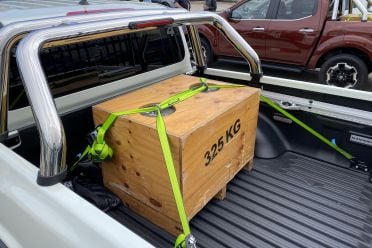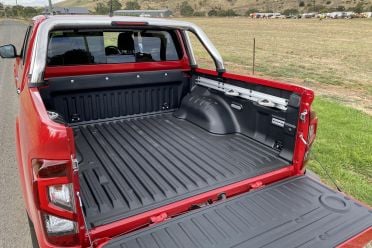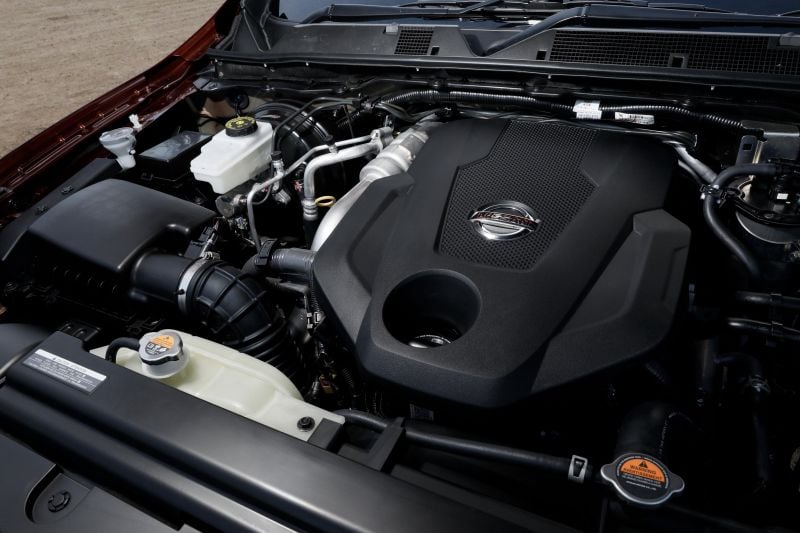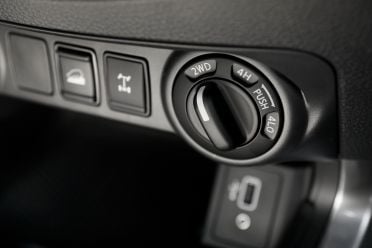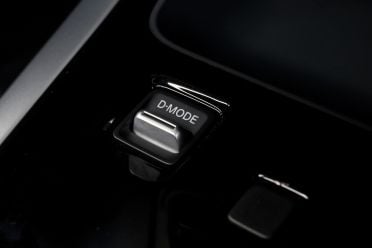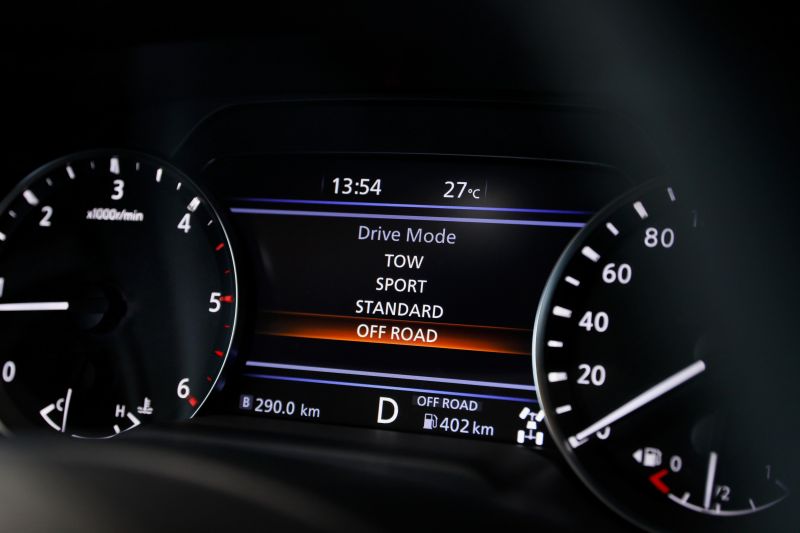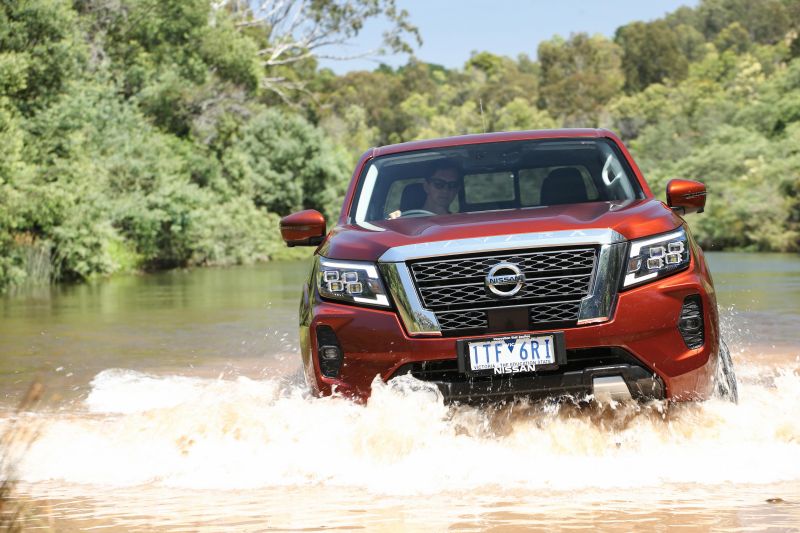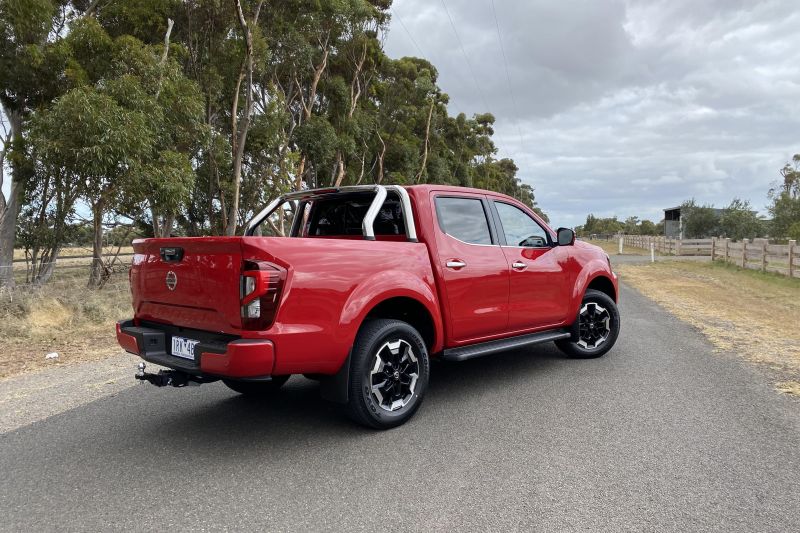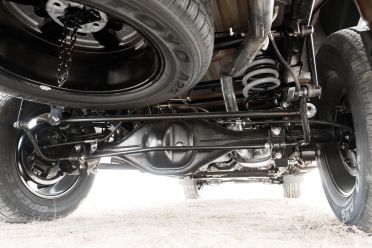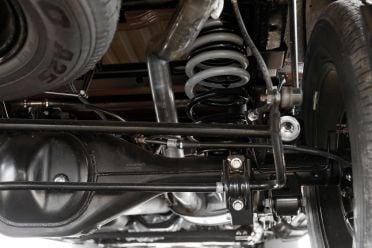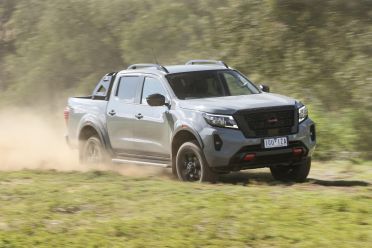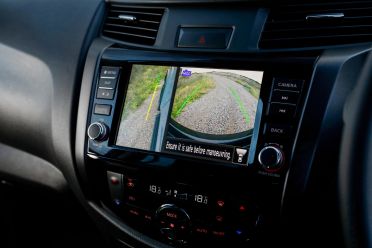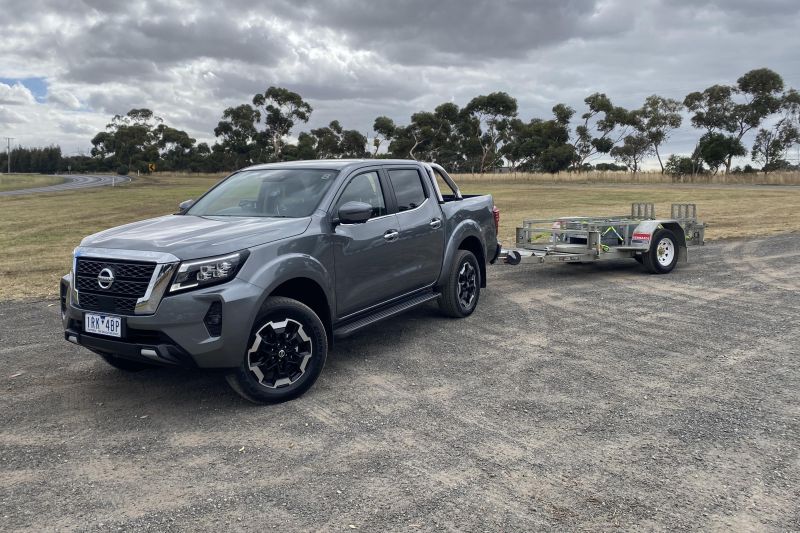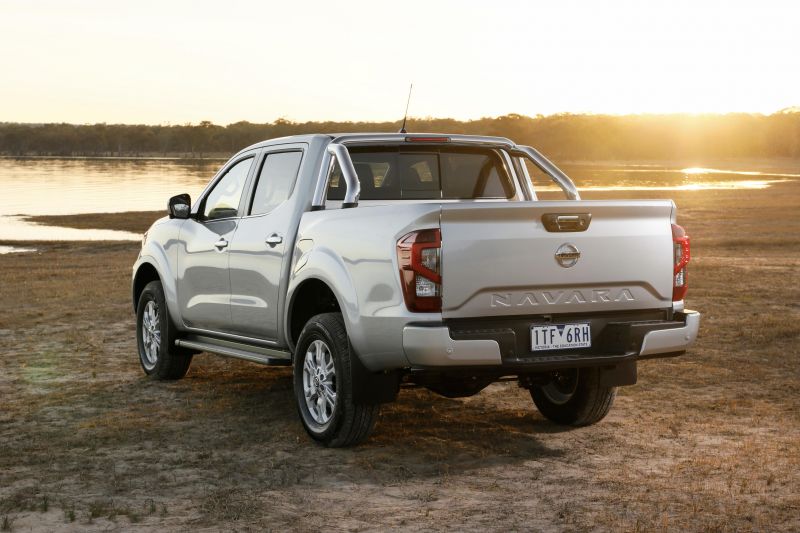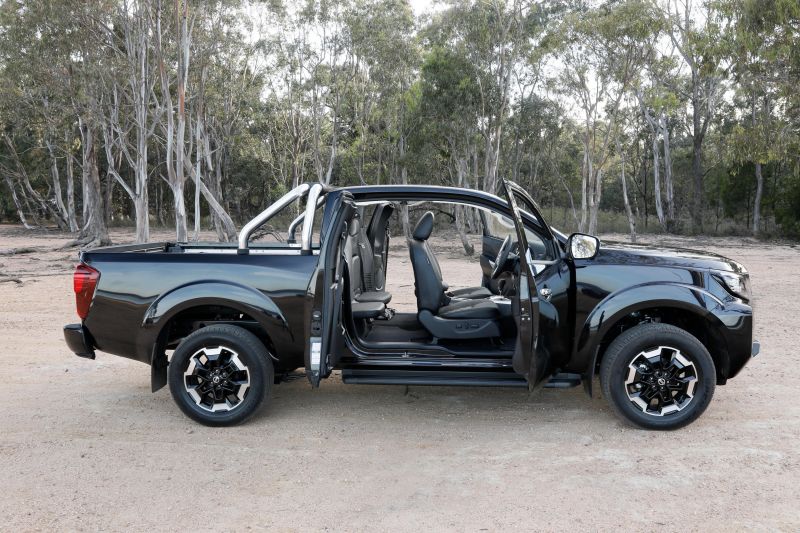The Nissan Navara has picked up a new range of updates for the 2021 model year to better compete against the bigger-selling Toyota HiLux, Ford Ranger, Isuzu D-Max, and Mitsubishi Triton.
The old fleet-focused base DX and RX variants have been given the flick, with Nissan choosing to focus on a four-variant range comprising the base SL, volume-selling ST and ST-X, and flagship PRO-4X. A new locally-engineered Warrior is due by the end of the year.
There’s a brasher grille, bumper and bonnet; restyled tub and tailgate; new steering wheel and trip computer; stronger rear axle; better brakes; payload gains; and the overdue addition of active safety features such as autonomous emergency braking (AEB) and blind-spot monitoring.
Nissan has also added a halo PRO-4X variant with lots of macho add-ons, and has expanded its accessories catalogue with new snorkels, roof platforms, and steel front bar options to tap into the lucrative aftermarket.
This is the fifth-running change to the current (D23 Series) Navara since 2014. Other changes made along the way since that demonstrably flawed original arrived have included the adoption of two-stage rear springs to handle loads better, refinement-boosting acoustic glass, more power steering assistance, and a slicker touchscreen with phone mirroring.
In other words, Nissan has done a lot to make today’s Navara (often its top-selling car in Australia) the most accomplished offering it can be. But is it good enough to hold its own in the ever-growing ute market that now accounts for close to one-in-five of all new vehicles sold?

How much does the Nissan Navara Series 5 cost?
Single Cab
The SL is priced at $32,300 plus on-road costs in 4×2 form (the old 4×2 base price for the DX was $27,150) or $39,300 in 4×4 guise. An auto is a further $2500.
King Cab
The SL 4×2 cab chassis costs $38,800 and the 4×4 is $45,800. The SL 4×4 pickup is $47,600 and the ST-X 4×4 pickup $58,720.
Dual Cab
The 4×2 range kicks off at $39,600 before on-roads for the SL (the discontinued RX previously kicked off at $34,850), climbing to $47,780 for the ST and $51,270 for the ST-X.
The 4×4 dual-cab range starts at $44,800 for the SL cab chassis or $46,600 for the SL pickup, climbing to $52,280 for the ST pickup, $55,770 for the ST-X pickup, and $58,130 for the PRO-4X pickup. In all cases an auto is a further $2500.
Thus SL 4×4 pickups are $900 more at MSRP than the equivalent Navara Series 4, while the ST is $3530 more and the ST-X an extra $1870. The PRO-4X costs $1030 more than the discontinued N-TREK, though they’re quite different propositions.
Drive-away
However, take these prices with a grain of salt. Nissan has launched the Series 5 with drive-away pricing on some versions to sweeten the deal. We used the MSRP pricing purely for comparative purposes.
Key deals include $33,890 drive-away for the SL 4×2 cab chassis, $50,990 drive-away for the 4×4 ST dual-cab, $57,290 drive-away for the ST-X 4×4 dual-cab, and $61,290 drive-away for the PRO-4X 4×4 dual-cab.
These latter two grades stack up against the D-Max X-Terrain, BT-50 GT, HiLux SR5 and Ranger XLT/Wildtrak pretty well.
You can read our detailed pricing breakdown here
What do you get?
Standard fare on the SL includes: 17-inch steel wheels with a full-sized spare, a locking rear diff (4x4s), halogen headlights, tailgate assist, cloth seats, vinyl floors, cruise control, manual air-conditioning, a digital speedo, Bluetooth, an 8.0-inch touchscreen, Apple CarPlay/Android Auto, and a reverse camera.
The ST adds alloy wheels with a steel spare, black side steps, rain-sensing wipers, high-beam assist, LED headlights, a single-tube sports bar in the tub, a Drive Mode Selector rocker switch, a leather-wrapped wheel and gear stick, floor carpet, an auto-dimming rear-view mirror, satellite-navigation, digital radio, a surround-view camera, rear privacy glass, and the unique sliding rear window.
The ST-X brings extras including 18-inch alloy wheels with matching spare, floor mats, a proximity key with button start, a genuine accessory tow bar, double-tube sports bar, Utili-Track adjustable tie-downs, a tub liner, dual-zone climate control, and a tyre-pressure monitor.
The flagship PRO-4X gets 17-inch black alloys wrapped in Yokohama Geolander all-terrain tyres, black exterior handles, leather-accented seats, a black sports bar, black roof rails, and fender flares.
There aren’t a huge number of options, though there are two packages on the ST-X. Package 1 adds leather seats with heating for front occupants, and eight-way power adjustment for the driver. Package 2 adds all the above, plus a sunroof.
Nissan has also expanded its warrantied accessory catalogue with parts developed and engineered in Australia. This is a lucrative market.
Features available at the dealer include three new winch-compatible bullbar designs (hooped and hoop-less available), a nudge bar with LED light bar, fender flares, a ladder rack system, soft or hard tonneau covers, a redesigned canopy, and a roof platform.
Is the Nissan Navara Series 5 safe?
This is one area of improvement.
Passive safety is, as before, handled by seven airbags (dual front, dual-front-side, full curtains, driver’s knee) and rear child-seat attachment points.
But active safety is much improved. All grades including the SL finally come with autonomous emergency braking with forward collision alert.
The ST and upwards also get blind-spot monitoring, lane-departure alert with braking function, and rear cross-traffic alert. The only features missing are a steering-controlled lane-keeping aid and active radar-guided cruise control.
The Navara retains a five-star ANCAP crash rating. This is based on a 2015 test.
What is the Nissan Navara Series 5 like on the inside?
What’s new? First of all there’s a much more aesthetic and ergonomic new steering wheel. Many a D23 owner inadvertently honked the horn when turning the wheel in the old one, I’d guess.
The new 7.0-inch digital trip computer and speedo unit is more contemporary and has a slick animated start sequence. There are also reshaped back seat cushions, new rear centre armrest and USB point, and more sound-deadening materials in the firewall, joining the acoustic glass added at the last update.
Nissan has oddly removed the cool pull-out cupholders mounted high on the front dash below the outboard vents though, which I can’t work out.
The interior remains pretty good, actually. Everything is trimmed in hard-wearing plastics which don’t feel particularly cheap and nasty, and the build quality seems solid and squeak-free.
I’m still irked by the absence of telescopic steering wheel adjustment however. For someone of my proportions, I therefore need to sit closer to the wheel than I’d like, which forces my knees against the centre dash fascia. The Navara is not the only ute with this problem – looking at you, Ford Ranger.
The centre touchscreen is ok, with decent navigation and phone mirroring. Nissan has also added a fast-charging USB-C port into the centre console of most grades. The last Navara I had with this system presented various glitches and Apple CarPlay dropouts, but I saw no evidence of that here.
I also placed a few phone calls using the Bluetooth, with no complaints.
The overhead-view 360 camera is a great offering (on most grades, too), but its resolution is quite grainy compared to the budget GWM Ute’s.
There’s not a heap of storage: no dash-top cubby, no more pull-out cupholders, a smaller-than-average centre console, and just a single glovebox rather than two like the D-Max, BT-50 and HiLux offer.
Those back seats aren’t quite as capacious as the Ranger or D-Max’s, though there was still space for my 194cm frame back there. Amenities are great, including a rear USB, vents, and a flip-down armrest. That class-unique sliding rear-most window is also a cool touch.
Nissan has increased the tub height by 45mm on dual cabs. The tub dimensions in these five-seater models are 1509mm long, 1134mm wide between the wheel arches, and 519mm deep. The king cab’s longer fixed-side tub is 1851mm.
I appreciate the ST-X’s Utili-Track sliders with moveable tie-downs, and the tub liner felt very sturdy.
The redesigned tailgate is nicely stamped and still juts at the top to make a small shelf. Nissan has also counterbalanced the tailgate like a Ranger’s, making it lighter to lift than it was before.
At the end of the day, the Navara’s interior doesn’t feel quite as contemporary as the much newer D-Max or BT-50’s, and it’s still ergonomically flawed. But in terms of tech and build quality it competes well enough.
What’s under the bonnet?
No changes here.
Base manual single-cab and dual-cab 2WD SL grades use a 2.3-litre single-turbo diesel donk pushing out 120kW and 403Nm. Cool fact: the gearbox casing is made in Melbourne’s outer suburbs at Nissan’s casting plant and then exported to the Thai plant.
But the vast majority of grades including all king cabs and all 4×4 dual cabs use a familiar 2.3-litre diesel four-cylinder with two turbos, one for low engine speeds and one for higher.
Outputs are 140kW of power at 3750rpm and 450Nm of torque between 1500 and 2500rpm. I snuck under 10 seconds on my 0-100km/h run. Claimed combined-cycle fuel use varies from a low 7.2L/100km to 8.1L/100km, and the tank is 80 litres.
The Navara’s outputs therefore eclipse the 133kW/430Nm 2.4-litre Triton, and equal the 140kW/450Nm 3.0-litre D-Max and BT-50. But the 150kW and 500Nm 2.8-litre HiLux and 157kW and 500Nm 2.0-litre Ranger eclipse it.
Nevertheless Nissan still claims an equal-class-leading 3.5-tonne braked-trailer towing capacity. The S-X and PRO-4X come standard with a Nissan accessory tow bar and ball. Trailer-sway control is built into the ESC module.
However, the GVM in dual cabs is 3150kg and the GCM 5910kg, meaning you can ‘only’ tow 2760kg when at payload.
How does the Nissan Navara Series 5 drive?
The engine is familiar, and remains middle of the pack. It’s generally quite refined until you’re really hard on throttle, and the seven-speed automatic transmission has a tall final ratio for highway use. It’s intuitive for the most part.
If you feed in too much power on take-off you’ll chirp the rear tyres, so better to be more progressive on the throttle. I only towed 1.1 tonnes and barely felt it. I also achieved fuel use of 8.1L/100km in an ST-X auto, which is excellent.
There’s a new rocker switch mounted next to the gear stick on 4×4 versions from ST and above with the automatic transmission that gives you various driving modes that change the shift points to suit off-roading or towing.
There are a few tweaks beneath. Nissan has fitted 25mm larger rear drum brakes than before alongside carryover front discs (some rivals have moved to rear discs now, but not the top-sellers) and claims to have strengthened the rear axle.
All dual-cab pickups now have payloads exceeding one-tonne (around 1100kg in the SL and ST). This is an excellent stat against the main competitors.
While some markets get revised suspension, Australian models picked up these revisions at the last update. The cab-chassis models use leaf springs at the rear, but the pickups retain five-link rear suspension with coil springs. This is alongside double wishbone setups at the front.
This means the Navara is a bit more supple over road bumps when unladen, though the well-calibrated Ranger and newly-updated HiLux are not any less comfy in truth – to the contrary.
One party trick in the Navara are dual-rate rear springs to better control the ride when laden without messing with the unladen road feel. Never did my ST-X test vehicle feel more comfortable and tied-down that when it had 350kg in the tub, which is a good sign. I carried 800kg in a Series 4 Navara without issue once, too.
All those NVH-suppressing insulation additions work well. I recorded noise level of 68dB over a familiar strip of b-road at 100km/h. Over this same stretch I recorded 70dB in a BT-50 and Ranger, though to be scientific about it I’d need to do all three on the same day in the same weather.
The 4×4 system is unchanged. It’s a part-time system that defaults to rear-drive, and has high- and low-range 4×4 operated via a switch. There’s an electronically-actuated lockable rear diff, hill descent control, and a nifty off-road monitor built into the 360 camera that shows you where your wheels are tracking.
For 4x4s Nissan claims clearance of between 213mm and 224mm (the latter for the PRO-4X on its chunkier tyres), approach angles between 31 and 32 degrees, break-overs between 22 and 23 degrees, and 600mm of wading depth sans snorkel.
You can read our detailed off-road Navara review here, using a pre-facelifted vehicle in the bush.
How much does the Nissan Navara Series 5 cost to run?
Nissan provides a five-year, unlimited-kilometre warranty.
Servicing prices are capped for the first six visits, at $502, $539, $703, $560, $543, and $775 (for the autos, all manuals are a couple of bucks more per visit).
While each visit looks expensive, you must consider the longer-than-average 12-month or 20,000km intervals. Most rivals need to be serviced at 12 months/15,000km, and a HiLux every six-months/10,000km.
CarExpert’s Take on the Nissan Navara Series 5
There are new and updated utes launching at a regular cadence these days, so whether these changes are enough to keep the Navara primed for a few more years until the all-new one comes remains to be seen.
But this is a pretty solid update, addressing many of the issues the Navara has carried for some time. This Series 5 iteration is actually significantly better than the original D23.
There’s still an argument that the Navara gets a little lost in the pack, against the bargain Triton, endlessly popular Ranger and HiLux, and slick new D-Max and BT-50. I’d argue the new PRO-4X goes some way to addressing this.
There’s also no doubt the Navara is quiet, refined, more imposing to look at, well-finished, and fuel efficient. It’s still not what we’d consider the ultimate class leader, but there’s more to recommend it now than before.
Click the images for the full gallery
MORE: 2021 Ford Ranger v Isuzu D-Max v Mazda BT-50 v Toyota HiLux dual-cab ute comparison
MORE: Nissan Navara news, reviews, videos and more

